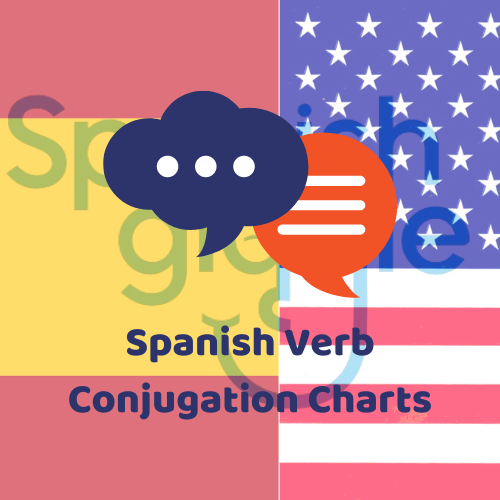Spanish verb conjugation can be one of the most challenging aspects for students of the language. However, it is an essential skill for effective communication. Conjugation charts are valuable tools that can help you learn and understand how verbs change according to tense, mood, person, and number. In this article, we’ll explore Spanish verb conjugation charts, how to use them, and why they are important.
What is a Conjugation Chart?
A conjugation chart is a tool that displays the different forms a verb can take depending on the person (first, second, third), number (singular, plural), tense (past, present, future), and mood (indicative, subjunctive, imperative). These charts are especially useful for visual learners who benefit from seeing all the forms of a verb laid out in one place.
Why Use Conjugation Charts?
- Clarity and Organization: Conjugation charts provide a clear and organized way to see how verbs change. This is especially useful for beginners who are trying to get a grasp of the various conjugations.
- Pattern Recognition: By studying conjugation charts, you can start to recognize patterns in how verbs change. This makes it easier to conjugate new verbs you encounter.
- Reference Tool: Even advanced speakers sometimes need to double-check conjugations. A well-organized chart can be a quick and reliable reference.
How to Read a Conjugation Chart
Typically, a conjugation chart is organized into rows and columns. The rows usually represent the different persons (yo, tú, él/ella/usted, nosotros/nosotras, vosotros/vosotras, ellos/ellas/ustedes) while the columns represent the different tenses and moods.
Example: Conjugation of “Hablar” (to speak)
| Tense |
Yo |
Tú |
Él/Ella/Usted |
Nosotros/Nosotras |
Vosotros/Vosotras |
Ellos/Ellas/Ustedes |
| Present |
hablo |
hablas |
habla |
hablamos |
habláis |
hablan |
| Preterite |
hablé |
hablaste |
habló |
hablamos |
hablasteis |
hablaron |
| Imperfect |
hablaba |
hablabas |
hablaba |
hablábamos |
hablabais |
hablaban |
| Future |
hablaré |
hablarás |
hablará |
hablaremos |
hablaréis |
hablarán |
| Subjunctive Present |
hable |
hables |
hable |
hablemos |
habléis |
hablen |
Important Tenses and Moods
Indicative Mood
The indicative mood is used to talk about facts and reality. The main tenses in the indicative mood are:
- Present (Presente): Used for actions that happen regularly or are currently happening.
- Example: Yo hablo español. (I speak Spanish.)
- Preterite (Pretérito): Used for actions that were completed in the past.
- Example: Yo hablé con él ayer. (I spoke with him yesterday.)
- Imperfect (Imperfecto): Used for ongoing or habitual actions in the past.
- Example: Yo hablaba con ella todos los días. (I used to talk to her every day.)
- Future (Futuro): Used for actions that will happen in the future.
- Example: Yo hablaré con ella mañana. (I will talk to her tomorrow.)
Subjunctive Mood
The subjunctive mood is used to talk about wishes, doubts, or hypothetical situations. It often follows expressions that indicate emotion, doubt, or uncertainty.
- Present Subjunctive (Presente de Subjuntivo): Used for actions that are hoped for or doubted.
- Example: Espero que tú hables con él. (I hope you talk to him.)
- Imperfect Subjunctive (Imperfecto de Subjuntivo): Used for hypothetical situations in the past.
- Example: Si yo hablara español, viajaría a España. (If I spoke Spanish, I would travel to Spain.)
Imperative Mood
The imperative mood is used to give commands or make requests.
- Positive Command: ¡Habla! (Speak!)
- Negative Command: ¡No hables! (Don’t speak!)
Tips for Using Conjugation Charts
- Practice Regularly: Consistent practice is key to mastering verb conjugations. Use charts to practice conjugating different verbs daily.
- Group Verbs by Conjugation Patterns: Grouping verbs that follow similar conjugation patterns can make learning easier. For example, regular -ar, -er, and -ir verbs follow specific patterns.
- Use Online Tools: There are many online tools and apps that provide interactive conjugation charts. These can be great for on-the-go practice and for checking your work.
- Create Your Own Charts: Writing out conjugation charts by hand can reinforce learning. Try creating your own charts for new verbs you learn.

